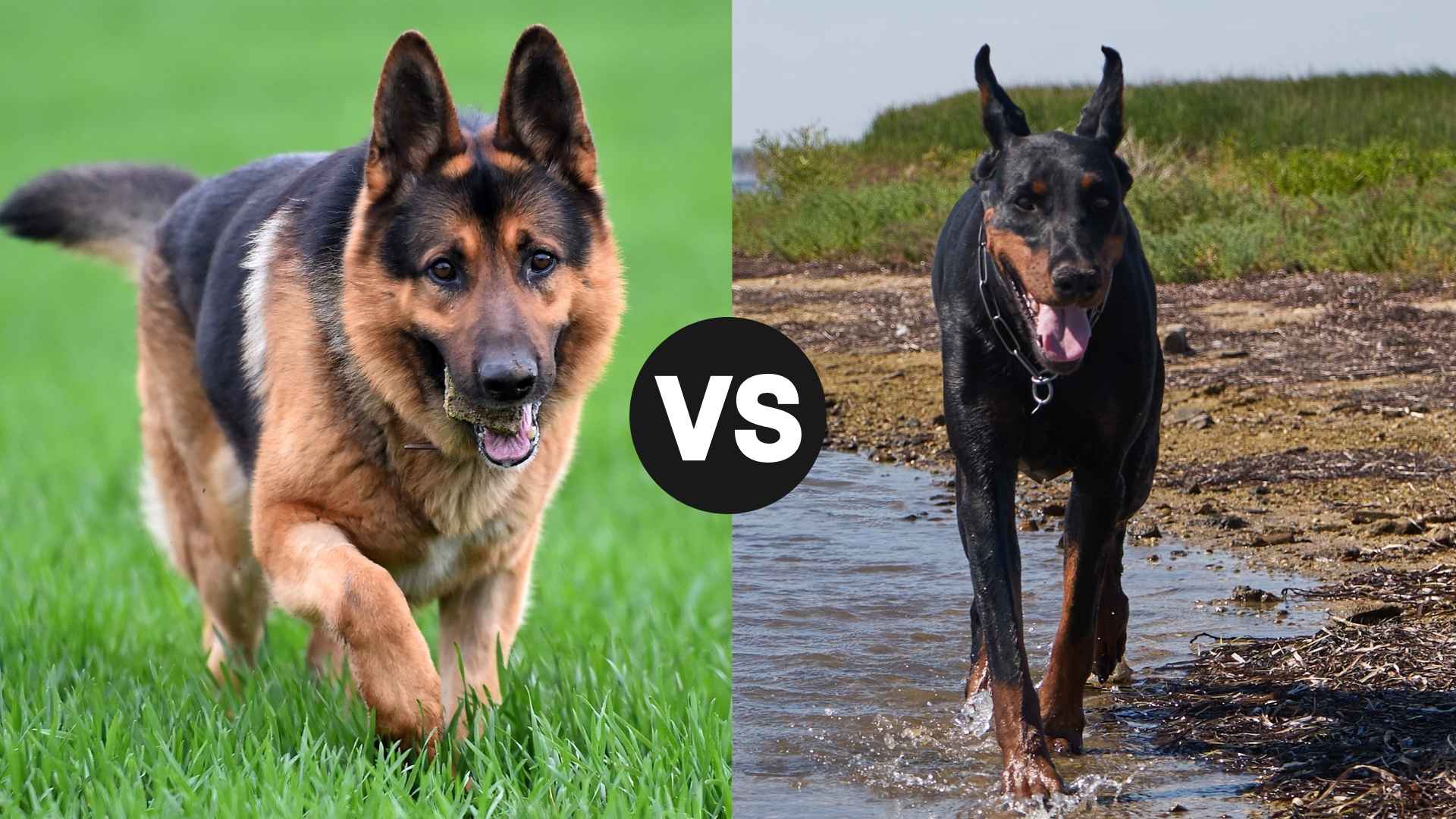If you are a dog lover and like large dogs, you must have come across the German Shepherd vs. Doberman Pinscher debate. Both the Doberman and the German Shepherd make for great companions as well as guard dogs for your family.
However, if you are stuck in the middle and need a detailed breakdown of these wonderful dog breeds, then you need to know some details about the breeds’ history and common characteristics to decide which is the best breed for you and your family.
Both the GSD and the Doberman breeds are considered to be working dogs, with high energy levels that make them suitable for a family living an active lifestyle. Both are considered to be highly intelligent dogs that require firm training.
Both can be loving companions for their owners and are good around children, making for affectionate and protective pets. Like all intelligent dogs, they need training to be socialized to be around other pets and small children. They also require extensive exercise to keep them healthy and happy.
That being said, there are lots of nuanced differences between these two breeds.
German Shepherd vs. Doberman Pinscher
Breed Origins and Historical Background
Dobermans tend to be perceived as aggressive, probably due to their origin story of being bred as a guard dog to accompany Louis Dobermann on his tax collection rounds. The tax collector’s dog quickly gained a reputation as a sturdy working dog.
They were approved by the American Kennel Club in 1908 and have reigned there as one of the most popular working breeds.
The German Shepherd was bred in Germany by German Cavalry Officer Captain Max von Stephanitz as a herding dog by cross-breeding multiple shepherd breeds from across Germany. Von Stephanitz and other breeders formed a club and continued to promote and refine the breed.
The German Shepherd proved to be so versatile that many forget that the original breed intent was to herd sheep. The breed was introduced to the US in the 1900s and suffered during the wars from anti-German sentiments.
As the times evolved and shepherding started to wane, the breed was marketed as an efficient guard dog. The breed is popular globally as guard, search, and rescue dogs.
Physical Characteristics and Appearance
Dobermans tend to catch the eye wherever they go with their smooth, glossy coats and short, erect ears, which is due to cropping and docked tails. Both these practices are being cut down now. They are usually seen in black and rust, but can also be in blue and rust, fawn and rust, red and rust, and even white.
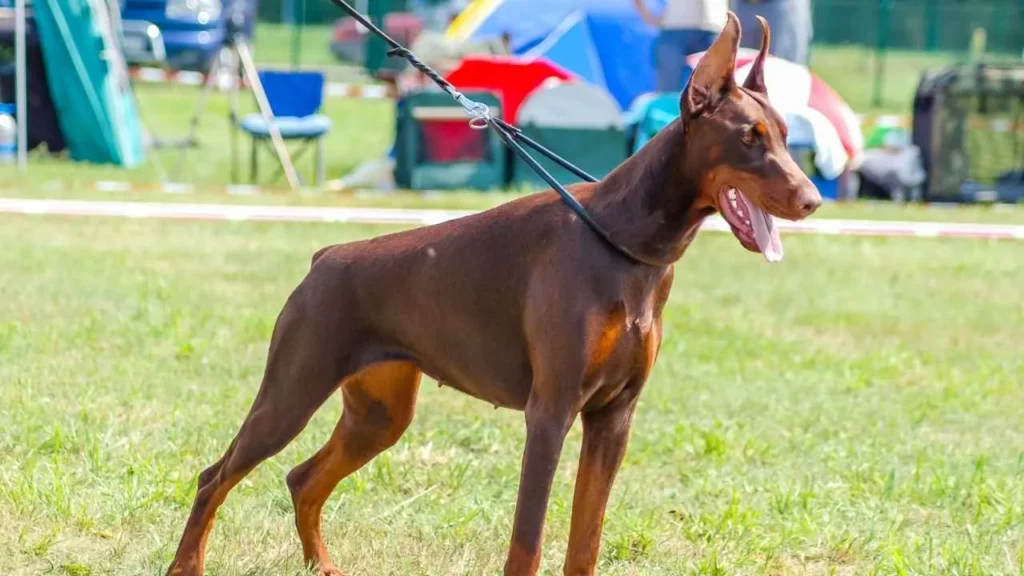
Their coats are thin and short, which eliminates them from being picked as police dogs in colder climates. They’ve been demonized by popular culture as aggressive guard dogs, but they are an affectionate addition to any family. They have a loyal and alert temperament and are also known as velcro pets for their tendency to stick around their owners.
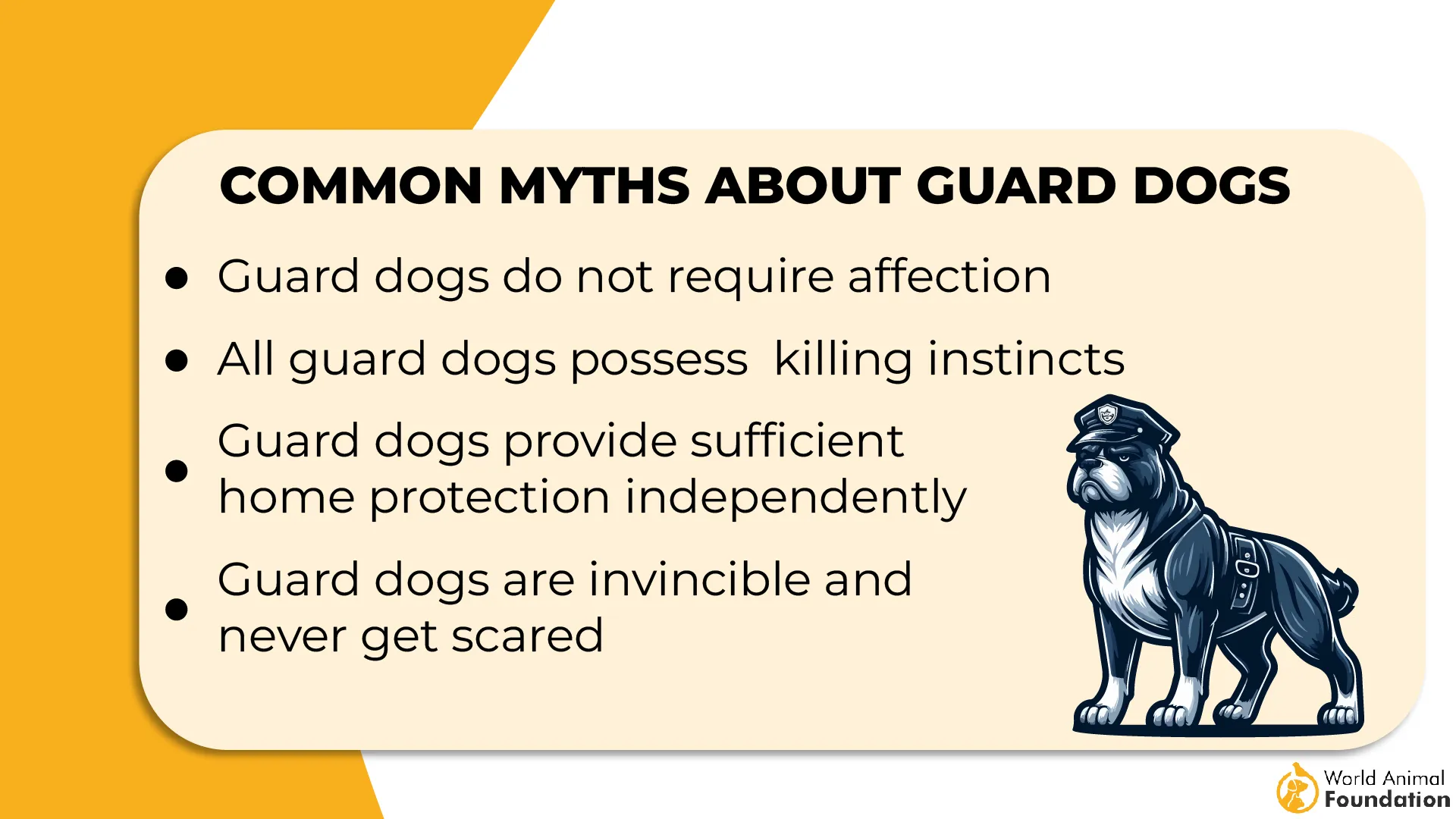
German Shepherds are a fluffier breed, with a double coat that helps them tolerate cold weather better. They are prone to shedding and require more grooming compared to the Dobermans. The breed also seems to be broader and more muscular, which is mainly due to their thicker coats.
The GSD comes in a mix of tan and black, as well as all black and sable. They have thick, plumy tails that can curve upwards. The breed is a few inches smaller on average compared to the Doberman.
Health and Common Medical Concerns
The Dobermans tend to be a healthy breed, but are prone to Gastric dilatation-volvulus (GDV), or what dog owners know as bloat. This can happen while the dog is feeding. There is a buildup of gas and food, which causes the stomach to bloat and contract, and can affect other vital organs like the spleen and liver.
Other common health issues that PetMD mentions are dilated cardiomyopathy, hip dysplasia, progressive retinal atrophy and and hypothyroidism.
In German Shepherds, the GDV is also prone to GDV, which can be life-threatening. Owners of GSD should learn to recognize the symptoms and know where they should take their dogs.
The breed is also prone to degenerative myelopathy, which causes paralysis of the hips and hind legs. Other common health issues are elbow and hip dysplasia, pannus, allergies, and cancer, according to PetMD.
Coat Care and Grooming Requirements
The Dobermans’ short and sleek coats require minimal grooming or brushing to remove loose hair. Weekly brushing should be enough to remove loose hair. Bimonthly baths, or when they get dirty, are enough for maintaining their glossy coats.
German shepherds require more intensive grooming to maintain their thick double coats. They will need brushing every 2-3 days to maintain coat health and control shedding. They will shed all year round, with a heavier shedding during spring and fall.

Ear cleaning and claw trimming needs are almost the same for both breeds.
Socialization Needs and Ideal Living Conditions
Both breeds are highly intelligent, working dogs that can be trained to perform multiple tasks. Dobermans enjoy consistent and firm training to learn tasks. They are sweet dogs that can perform well as psychiatric service dogs. They have strong protective instincts.
The German Shepherd puppies can be trained to perform multiple tasks, and they perform well as both rescue dogs and make excellent guard dogs. They respond well to obedience training. Both breeds need early socialization to do well as family pets, especially if you have young kids.
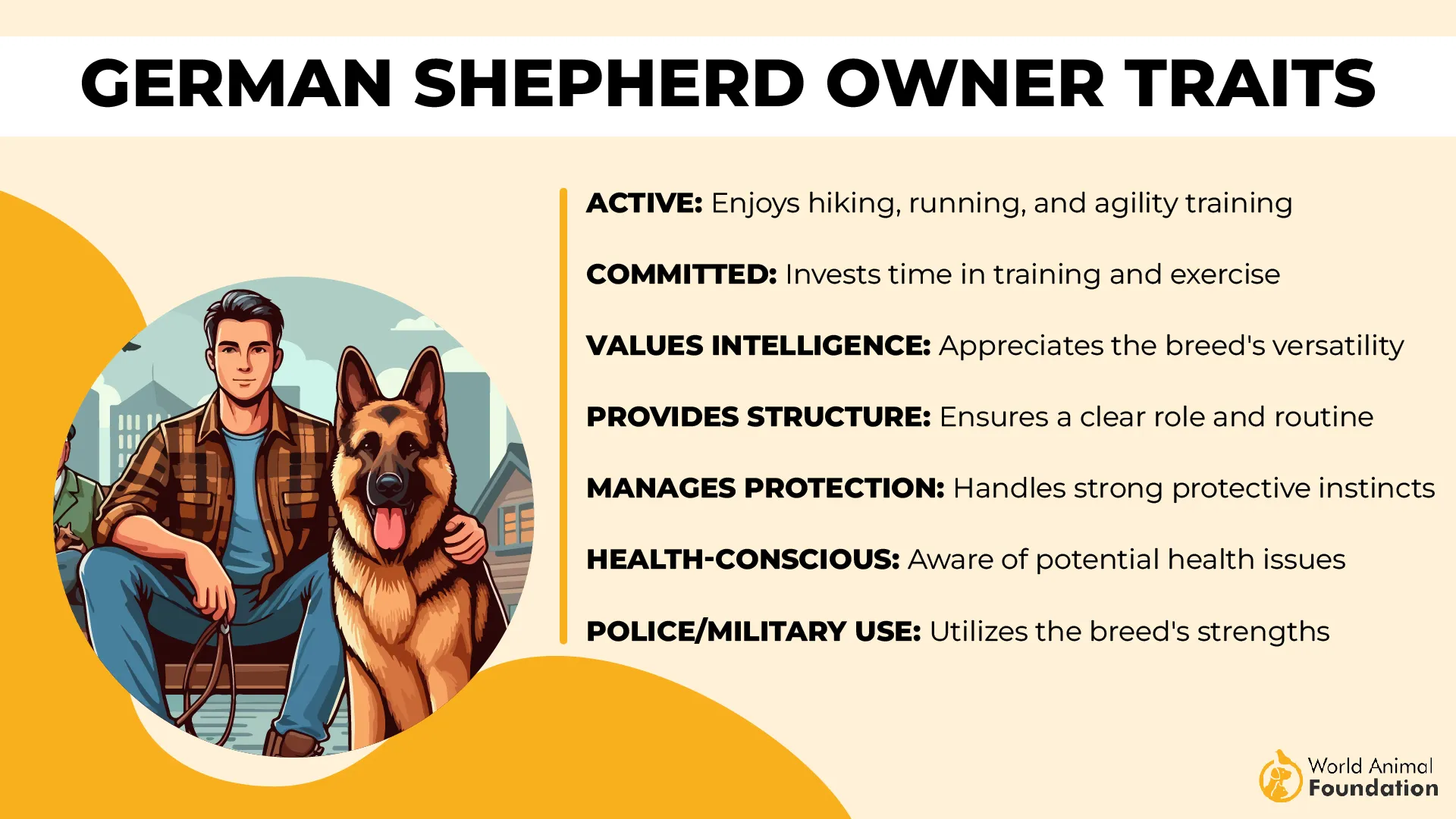
Dobermans can require more intensive training as they tend to be more independent and will require more control. German shepherd puppies need to be socialized with multiple people and situations to keep them comfortable around strangers and reduce aggression.
Both are energetic dogs and need at least two hours of exercise, with a mix of agility training and daily walks to keep them healthy and happy.
Which Breed Is Right for You?
There’s no way that reading this will help you to decide which breed will be right for you. Dobermans are more clingy compared to German Shepherds. German Shepherds need quite a bit more commitment for their grooming and maintenance.
The Doberman can have a high prey drive, which will require training and control in families with other dogs or pets. As puppies, it’s best to socialize them to be around strangers and other pets.
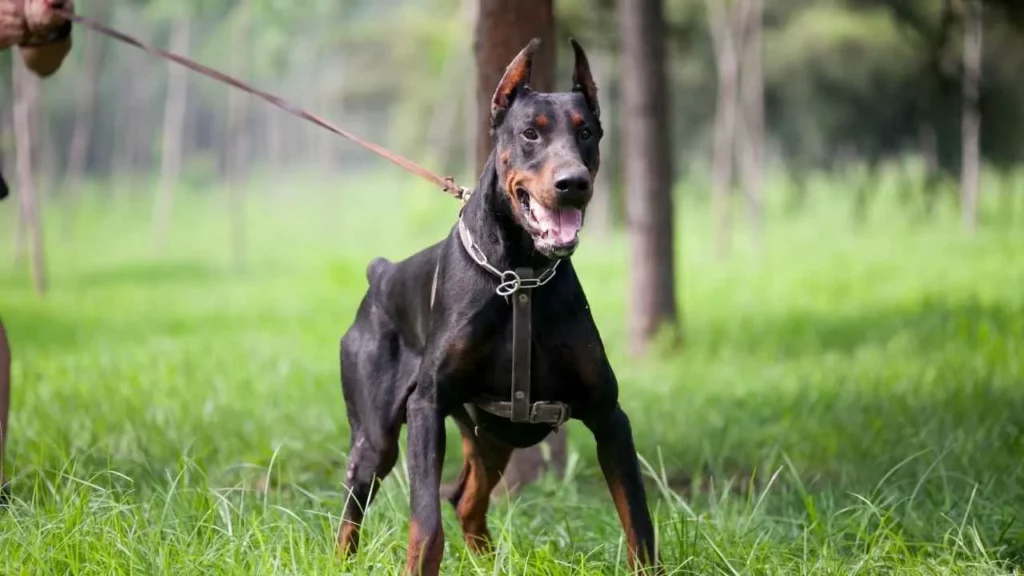
Both breeds require almost the same level of daily exercise and will do well with an active and athletic family. Whatever breed you end up going for, make sure to go to a reputable breeder if you are getting a puppy.
If you are going for a rescue or shelter dog, make sure to find out how the individual dog behaves around other dogs, young children, and strangers.
Conclusion
In short, both Dobermans and German Shepherds have their own unique characteristics, but both are fairly large dogs that require an active lifestyle, with intensive exercise, play time, and outdoor walks to release their high energy.
As intelligent animals, they need a firm hand and may be difficult for young children to control and keep in check. Another final factor is your living arrangement and the time that you can give to any pet.
If you have a house with a yard where the dog can run about, or open space indoors for running, and the time and energy to give 2-3 hours a day to your new GSD or Doberman should help you decide.


